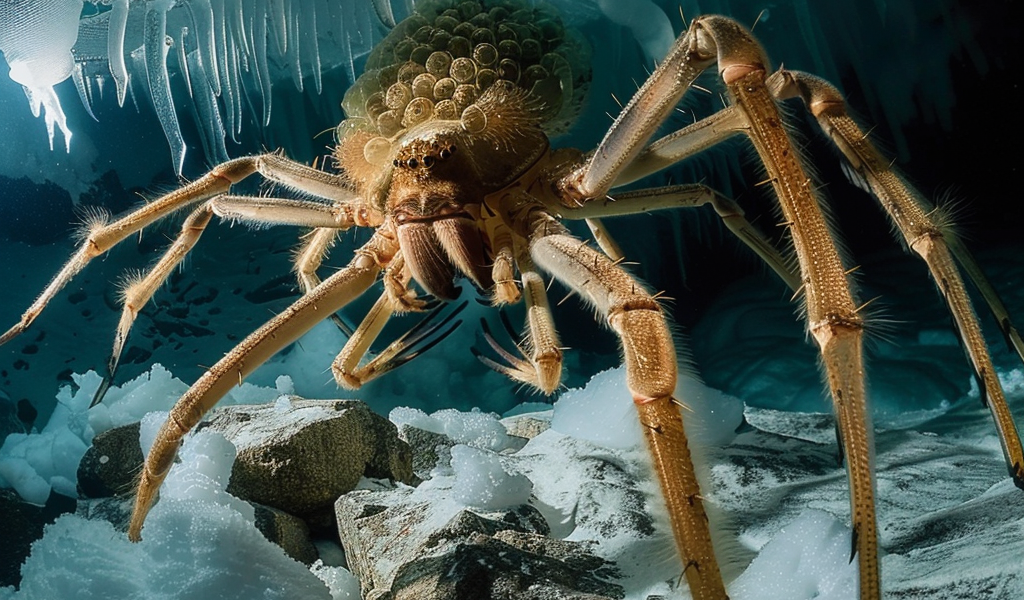After 140 years, researchers have made a groundbreaking discovery about the reproductive habits of giant sea spiders in Antarctica. The mysterious marine creatures have long eluded marine biologists, but a recent study published in the journal ‘Ecology’ sheds light on their unique method of reproduction.
Researchers from the University of Hawaii at Manoa traveled to the remote continent to study and observe the strange invertebrates, which are named for their resemblance to their eight-legged land-dwelling counterparts. The findings of the study could have wider implications for marine life and ocean ecosystems in Antarctica and around the world, according to a news release from the university.
Lead researcher Amy Moran, an ecologist at the University of Hawaii, highlighted the unusual reproductive method of Antarctic sea spiders. Unlike other sea spiders that carry their babies before they hatch, Antarctic sea spiders attach thousands of eggs to the ocean’s rocky bottom, where tiny larvae hatch several months later. The males also care for the young, but in a simpler way than other sea spiders, providing insight into the evolutionary bridge that leads to fathers taking care of their offspring.
Sea spiders, formally known as pycnogonids, often have eight legs and resemble arachnids, but they are not actual spiders. They are widespread in many marine habitats but are most common in polar regions. With about 1,500 known species, some sea spiders can grow up to 20 inches long, exhibiting a phenomenon known as ‘polar gigantism’ to cope with extreme cold.
Despite their prevalence, sea spiders are largely understudied, according to many researchers. The discovery of the unique reproductive behavior of Antarctic sea spiders adds to the understanding of these enigmatic creatures and may have broader implications for marine ecosystems.
Overall, this study provides valuable insights into the reproductive strategies of marine life in Antarctica and offers a glimpse into the evolutionary adaptations of these fascinating creatures.





